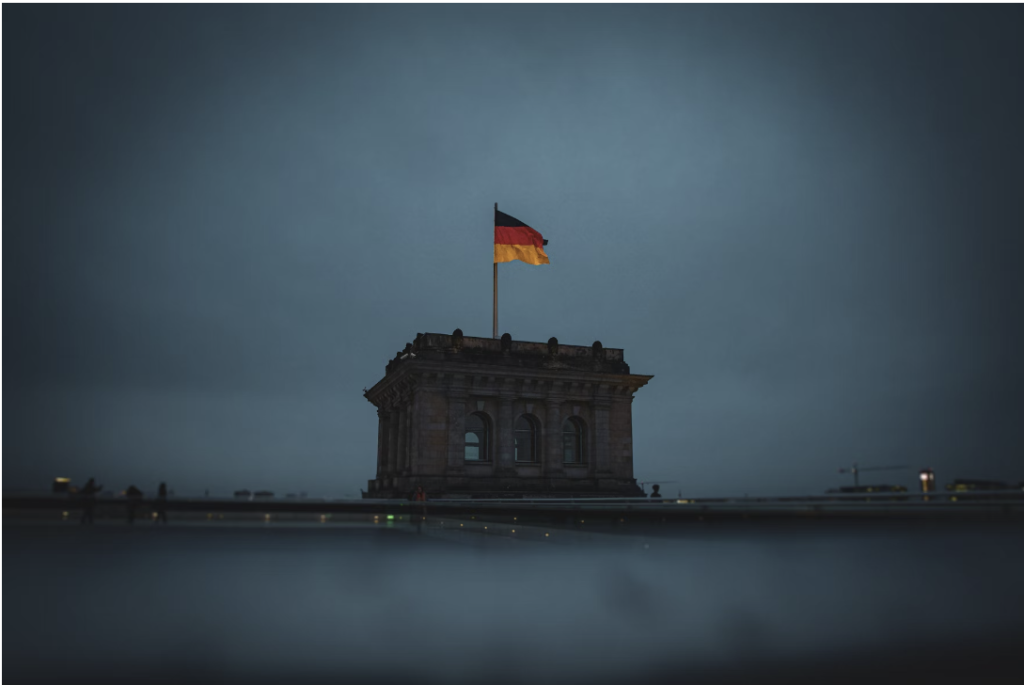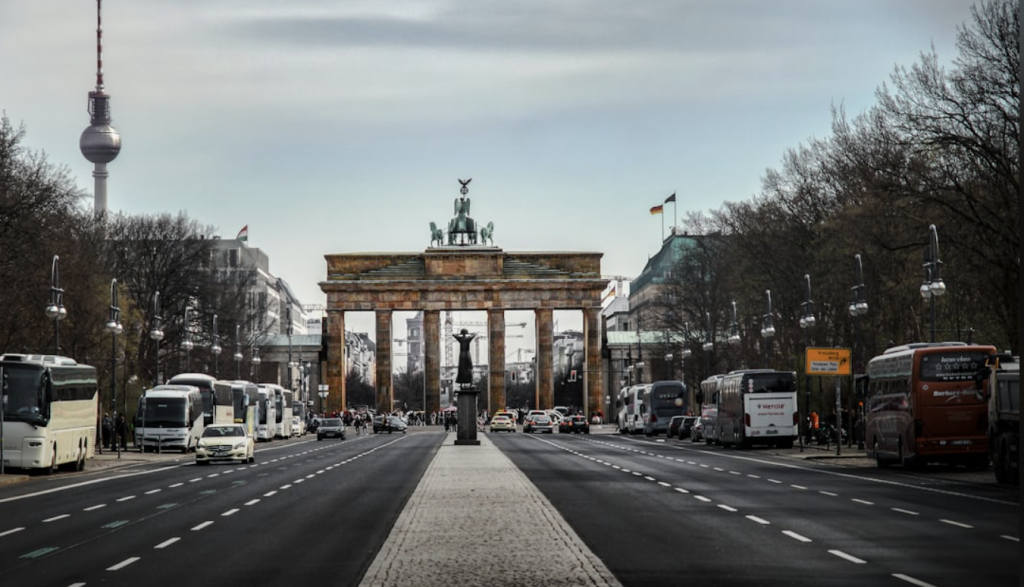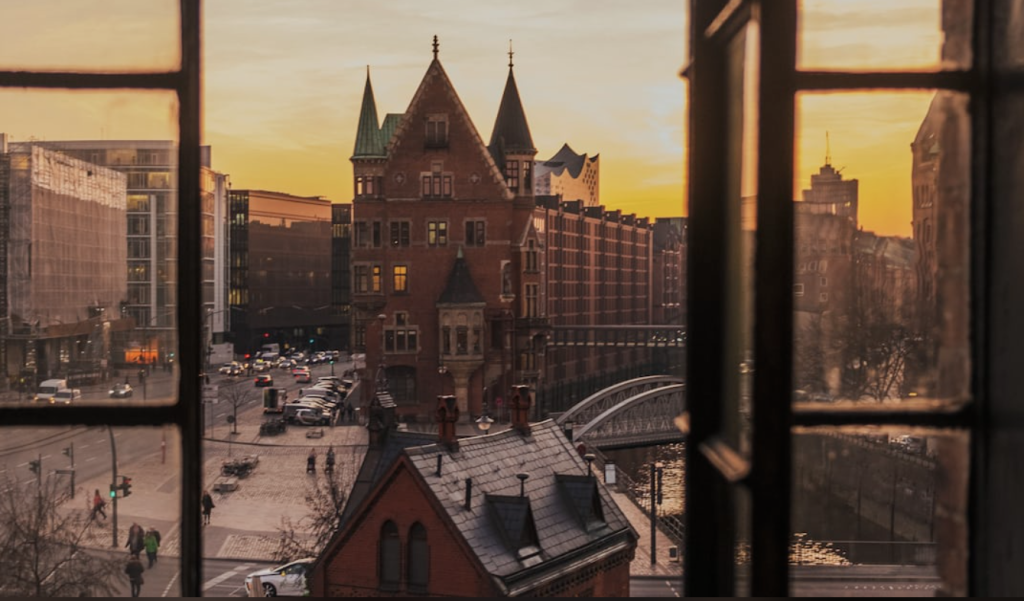photo by Christian Lue

Germany Unity Day, celebrated annually on October 3rd, marks one of the most significant moments in modern European history: the reunification of East and West Germany in 1990. This day is a national holiday and serves as a symbol of unity, peace, and the triumph of democracy over division. To truly appreciate the importance of this event, it’s essential to understand the historical background that led to the separation of Germany, the struggles endured during the Cold War, and the ultimate significance of reunification.
The Division of Germany
The division of Germany traces back to the aftermath of World War II in 1945. As the Allied powers—namely the United States, the Soviet Union, Britain, and France—liberated Nazi-occupied Europe, they also occupied Germany and split it into four zones of influence. Berlin, the capital, was similarly divided despite being located entirely within the Soviet zone.
This division marked the beginning of what would eventually become a much deeper split. The political differences between the Soviet Union and the Western Allies grew quickly, laying the foundation for the Cold War. In 1949, Germany was officially split into two separate states: the Federal Republic of Germany (West Germany), backed by the Western powers, and the German Democratic Republic (East Germany), a Soviet satellite state.
Life Behind the Wall
Photo by – Ansgar Scheffold

The most visible and notorious symbol of Germany’s division was the Berlin Wall, erected in 1961 by the East German government. Designed to prevent the mass migration of East Germans to the West, the wall was a physical representation of the “Iron Curtain” that Winston Churchill famously spoke about—a stark reminder of the division not just of a country, but of Europe itself. Over the years, many people attempted to escape from East to West, often risking their lives. Families were separated, and the freedoms enjoyed in West Germany seemed a world away to those living under the strict regime in the East.
Life in East Germany was defined by state control, censorship, and limited freedoms. The state security apparatus, or “Stasi,” monitored citizens’ every move, creating an atmosphere of fear and oppression. The economic conditions were also vastly different between the two Germanys. While West Germany experienced an economic miracle (Wirtschaftswunder) during the post-war years, East Germany struggled with stagnation and shortages. This economic disparity further fuelled the desire of many East Germans to flee to the West.
The Fall of the Berlin Wall
As the 1980s progressed, cracks began to appear in the Soviet bloc. In Eastern Europe, reform movements gained momentum, and protests demanding more freedoms and democratic reforms became widespread. The leadership of the Soviet Union under Mikhail Gorbachev introduced policies like Glasnost (openness) and Perestroika (restructuring), signaling a shift in the strict authoritarian governance that had characterized much of the Eastern bloc.
The tipping point came in 1989. In response to mounting public pressure and growing demonstrations in East Germany, the government made an unexpected announcement on November 9, 1989: the borders between East and West would be opened. What followed was a wave of euphoria as thousands of people flooded the streets, heading to the Berlin Wall to witness its fall. The Wall, which had long been a symbol of division, was physically torn down by citizens and would soon exist only in memory.
This monumental event set the stage for the eventual reunification of Germany, which would officially take place less than a year later, on October 3, 1990.
The Path to Reunification
Photo by – Julia Solonina

While the fall of the Berlin Wall was the most visible sign that reunification was imminent, the process itself was complex and required significant diplomatic efforts. Both internal and external negotiations were necessary to reunite the two Germanys, especially given the Cold War tensions that had divided the country for over 40 years.
International agreements were key to ensuring a smooth transition. The “Two Plus Four” talks involved the two German states and the four Allied powers that had controlled Germany after World War II: the United States, the Soviet Union, the United Kingdom, and France. These talks led to agreements on issues such as borders, NATO membership, and the withdrawal of Soviet troops from East Germany.
Domestically, the reunification process required the merging of two very different political, economic, and social systems. East Germany’s planned economy and authoritarian government had to be integrated into West Germany’s capitalist and democratic structure. This was no small feat, as the disparities between the two systems were vast. The transition also involved massive economic investments to rebuild and modernize the infrastructure of the former East Germany, which lagged significantly behind the West.
The Significance of Unity
Germany Unity Day is not only a day to celebrate the reunification of a divided country, but it also serves as a reminder of the values of freedom, democracy, and peace. The reunification of Germany represented the end of the Cold War and the beginning of a new chapter in European and global history. It demonstrated that division and conflict, even on such a massive scale, can eventually give way to unity and cooperation.
Today, October 3rd is marked by celebrations across the country. While Berlin often hosts the largest events, with political speeches, concerts, and fireworks, cities and towns throughout Germany also participate in the festivities. It’s a day for reflection on how far the country has come since the fall of the Berlin Wall and to consider the lessons that can be drawn from the division and reunification process.
Challenges of Reunification
While Germany’s reunification is often hailed as a success, the process was not without its challenges. Economically, integrating the two halves of the country proved to be more difficult than initially expected. The former East Germany, with its outdated infrastructure and less competitive industries, faced higher unemployment rates and slower economic growth in the years following reunification. This led to a period of economic and social adjustment as the government invested billions of dollars into developing the eastern states.
Culturally, there were also challenges. The two Germanys had developed distinct identities during the 40 years of division. Reunification brought these differences to the surface, as West Germans and East Germans—sometimes referred to as “Wessis” and “Ossis”—adjusted to their new shared reality. These cultural and economic divides have lessened over the years, but traces of them remain even today, particularly in areas like income levels and political preferences.
A Unified Germany Today
Over three decades have passed since the reunification of Germany, and today the country stands as a strong and prosperous nation. It has grown into Europe’s largest economy and plays a key role in international affairs. However, the memory of division remains an important part of Germany’s national consciousness. Germany Unity Day serves as an annual reminder of the country’s ability to overcome adversity and its commitment to democracy and human rights.
Moreover, the reunification of Germany had a profound impact not just on the country itself, but on Europe as a whole. It contributed to the broader process of European integration, helping to pave the way for the expansion of the European Union and the establishment of a more united and peaceful Europe.
Conclusion
Germany Unity Day is a celebration of a pivotal moment in modern history—one that marked the end of decades of division and symbolized the triumph of freedom and unity. The reunification of East and West Germany on October 3, 1990, continues to resonate as a reminder of the strength that can emerge from overcoming division. It is a day for Germans to reflect on their shared history, celebrate their progress, and look toward the future as a unified nation.